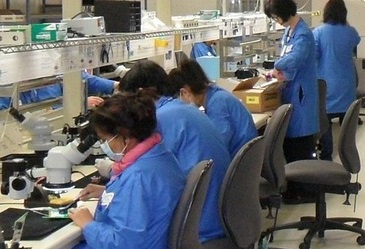Visiting the Supplier’s Factory – Last Resort or First?
Problem prevention is preferable to problem solving with your global suppliers. Both require you to engage closely, and consider their plant an extension of your own. Start with a thorough supplier audit.
by Dann Gustavson

The business – call it Theta Corp. – promotes itself as a high quality, high reliability producer of specialized instrumentation in a regulated industry. And in fact, they are known by their customer base for exemplary product performance, service, training, and support. One product included a mission critical component, a piezo buzzer to notify the user of certain alarm conditions if they occurred in the product use case. It’s a $1.95 part in a $5,000 product.
All was good, until one day it wasn’t.
The COO began receiving reports of field returns for “failure to alarm,” with the failure rate doubling and then doubling again in a period of about 3 months. This increase made it Numero Uno on the failure Pareto. What’s going on?
The fact-finding went kind of like this. The previous component supplier (in China) was bought out by another company, call them ABC (also in China), about 18 months prior to the part quality going south. ABC Company discontinued the component, since Theta was the only customer and their purchase volume was insufficient to keep it going. The Theta commodity manager worked with Engineering to find another source, FGH Company. However, ABC would not license the design to FGH, so FGH designed and began manufacturing a part based on the same specifications, but using different materials and process so as not to infringe. Seemed like a good solution at the time.
When the field problem manifested, the Theta (U.S.) Quality director contacted FGH (China) by email and phone to get them to put some attention on the problem. FGH is a small closely-held company; the owner-founder is the president, and does not speak English. Turned out the only English speaker in FGH was the Admin, Christine. Emails and conference call attempts through Christine for over a month yielded no progress. So after exhausting other options, a visit to the supplier was set up.
In 20-20 hindsight, a formal supplier audit should have been performed as soon as the ABC buyout was announced. The On-market Product Engineering Manager (yours truly) was the first to visit FGH. I spent a week in their plant, starting to build the relationship with the FGH president and see first-hand how the buzzer was manufactured. Long story short, there was a great deal of room for improvement.
I’m summarizing here a few observations from that first visit.
- The supplier personnel did not know that the component Theta was purchasing was used in a critical-to-quality application. The component was intended for use in toys and other consumer products.
- The Theta component was assembled in the same line and concurrently with other similar components.
- The production line did not segregate Theta raw materials from other assemblies’ materials, making mix-ups inevitable.
- The turnover of production staff was high, so training was occurring continually. New people and experienced people worked on the same workstations.
- The finished components at the end of the line were dropped into a box with no protection, and moved to the test area.
- The test was a simple power supply connection to the component with an operator listening for a sound. Any sound constituted a pass. Passing parts were again dropped into a box for transit to the packaging area.
- Many more deficiencies omitted here for brevity.
At the end of the visit, I provided and discussed several improvements to resolve the process deficiencies that were affecting component reliability. I also set up a schedule for follow-on supplier audits by Theta’s Senior Quality Engineer, who reads and speaks Mandarin. His visits resulted in the supplier adding process and handling controls, strengthening process instructions and training, and instituting an objective, repeatable automated acceptance test. Although the changes doubled the assembly time for the piezo buzzer, and more than tripled the price, the result was a component fit for use in Theta’s high-reliability product.
OK, Dann - What's My Take-away?
Perform a Supplier Audit
Visiting the supplier’s plant and conducting a supplier audit as a last resort means it will probably take longer to solve problems that arise. Why not make it the first resort? Sure, it can be difficult if your critical supplier’s production site is half a world away. But part of the cost of doing business is occasional travel, especially when you have a potential show-stopping problem on your hands. Your critical suppliers are an integral part of your value stream, and should be as well understood as your own internal processes. Every supplier doesn’t fall into that category, although you’re better off to err on the conservative side – stories of 2-dollar commodity parts causing line-downs and recalls are plentiful.
Treat your supplier’s plant as an extension of your own before you are forced into that position by a preventable crisis.
In other words, practice Next Level Leadership!
Dann Gustavson, PMP®, Lean Six-Sigma Black Belt, helps Program Managers and their teams achieve superior results through high-impact program execution. Prepare, structure, and run successful programs in product engineering, manufacturing operations (including outsourcing), and cross-functional change initiatives.
Contact Dann@Lean6SigmaPM.com.
